Can You Use Free iMessage Internationally? How to Use it Properly

What To Know
- iMessage allows free international messaging via an internet connection, avoiding traditional SMS (text message) costs and enabling communication with other Apple devices anywhere in the world.
- Key distinctions between iMessage and text messages include the former’s use of the internet for free international messaging, while the latter relies on carrier services and incurs fees.
- To ensure smooth international iMessage communication, both sender and receiver must have iMessage set up and an internet connection, with the service requiring initial activation in iPhone settings.
In this guide, we’ll explore whether you can use iMessage internationally for free, and I’ll teach you how to use it properly.
Let’s get started!
Quick Navigation
Can You Use iMessage Internationally for Free?
Yes, iMessage lets you chat with your friends and family all over the world without worrying about extra costs.
iMessage uses the internet to send messages, so you won’t have to pay more like you might with regular texts.
This is a big difference from traditional texting, which can get expensive, especially for international messages.
Understanding iMessage and Text Messages
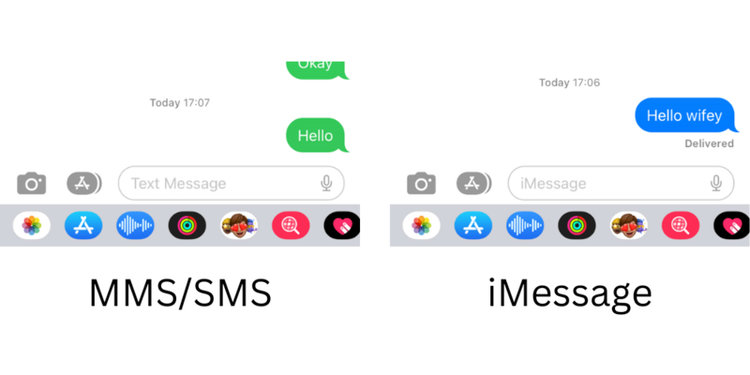
iMessage is a service that uses your internet connection to send messages, allowing you to communicate internationally without additional fees.
In contrast, SMS text messages depend on your mobile phone carrier’s network and may incur costs for long-distance communications.
The main advantage of iMessage is its ability to offer free messaging, ensuring you stay connected with your relatives.
Besides texting, Apple also provides a feature called FaceTime for making audio and video calls, giving you even more ways to stay connected with your friends and family.
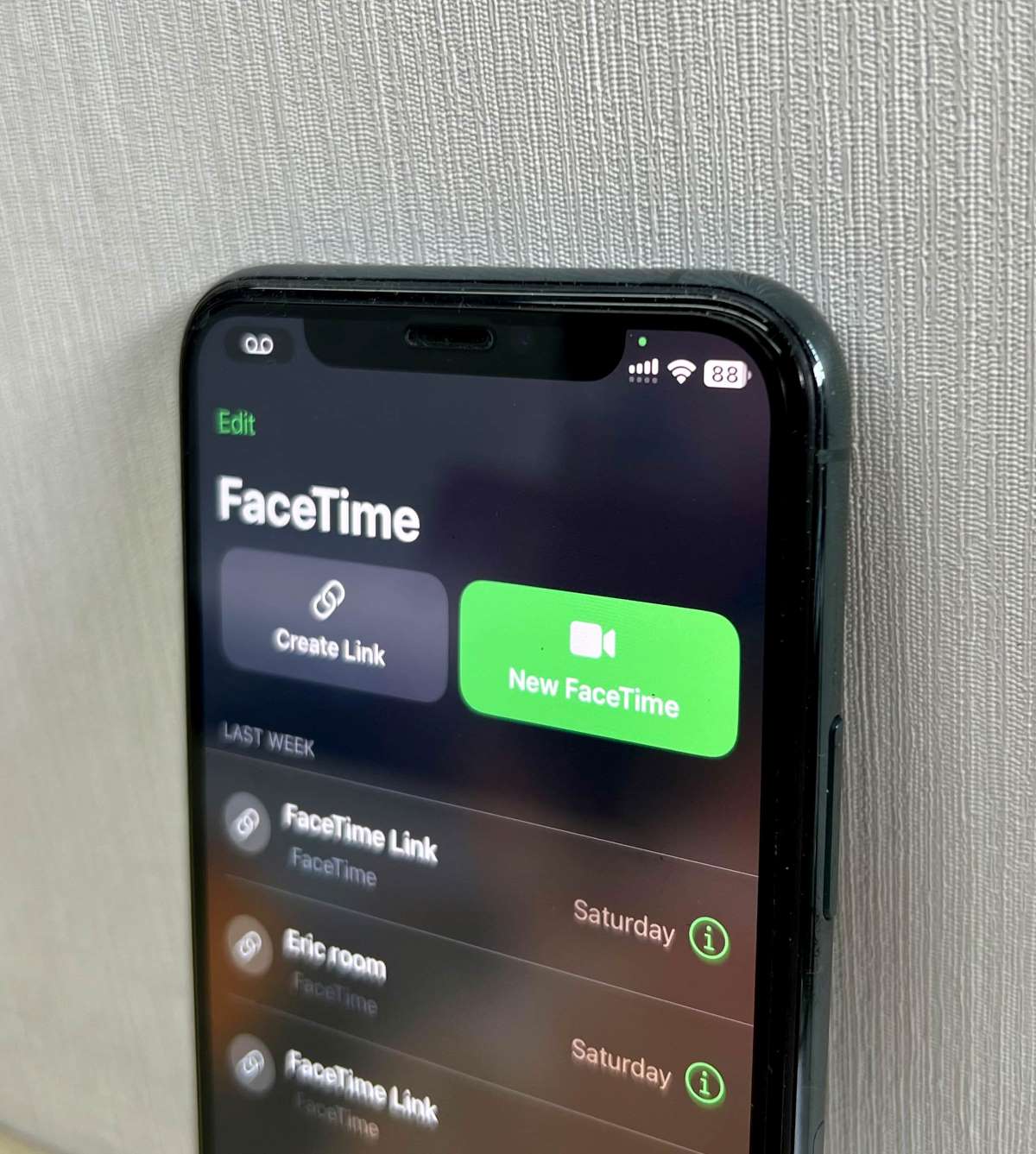
If you’re curious to learn more about how all this works, I’ve written a detailed article that you can check out.
Device Compatibility
One unique aspect of iMessage is its compatibility only with Apple devices.
This means if you’re using an iPhone, you can only send iMessages to other iPhones or iPads.
In contrast, SMS texts can reach any phone, regardless of whether its operating system is Android or iOS.
Benefits of Using iMessage
- Enables free international messages, eliminating long-distance charges.
- Provides a consistent communication experience anywhere, as long as you have an internet connection.
- Uses your Apple ID, offering convenience and an alternative to sharing your phone number.
- Saves you from the costs associated with standard SMS fees for international texting.
Requirement for Sender and Receiver
For iMessage to work, both the sender and receiver must activate iMessage and be connected to the internet.
This setup ensures seamless international communication at no extra cost.
Next, I’ll guide you through the simple steps to enable iMessage and start enjoying worldwide communication without the worry of additional charges.
How to Send an International iMessage Properly
Sending an international iMessage is a breeze, and it works just the same as if you were sending a message to someone in your own country.
iMessage is designed to function worldwide, giving you all the same great features and ease of use, no matter where you are.
The only thing you need to consider is your phone’s connection to the cellular network, especially when you’re in an area without Wi-Fi.
This could influence how much data you use and possibly the cost, depending on your phone plan.
Let’s dive into how you can smoothly send an iMessage to someone in another country!
Get Your iPhone iMessage Ready
Setting up iMessage on your iPhone is the first step you’ll need to take to begin using this messaging feature.
If you’re new to the iPhone or haven’t yet tried out iMessage, here’s a straightforward guide to get started:
Step 1: Open your iPhone and navigate to the Settings app to kick things off.
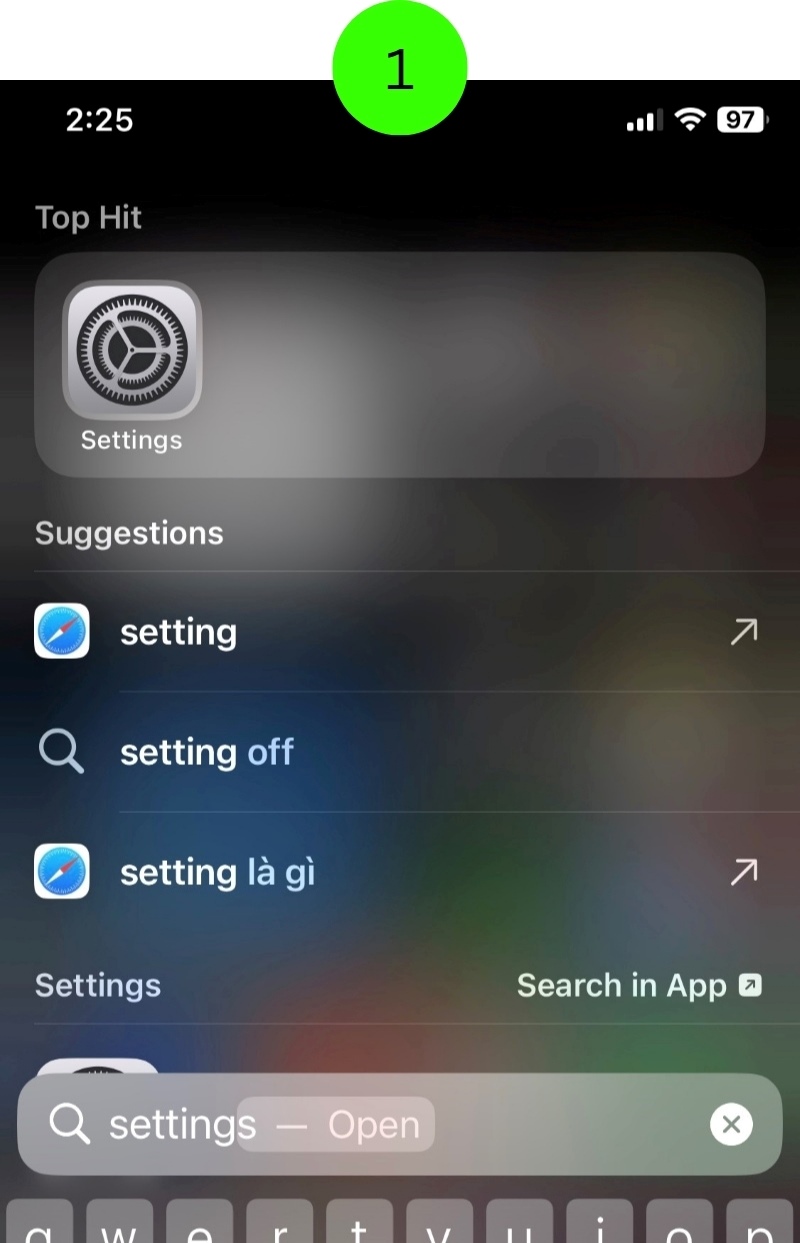
Step 2: Scroll through the menu until you find the Messages option and select it.
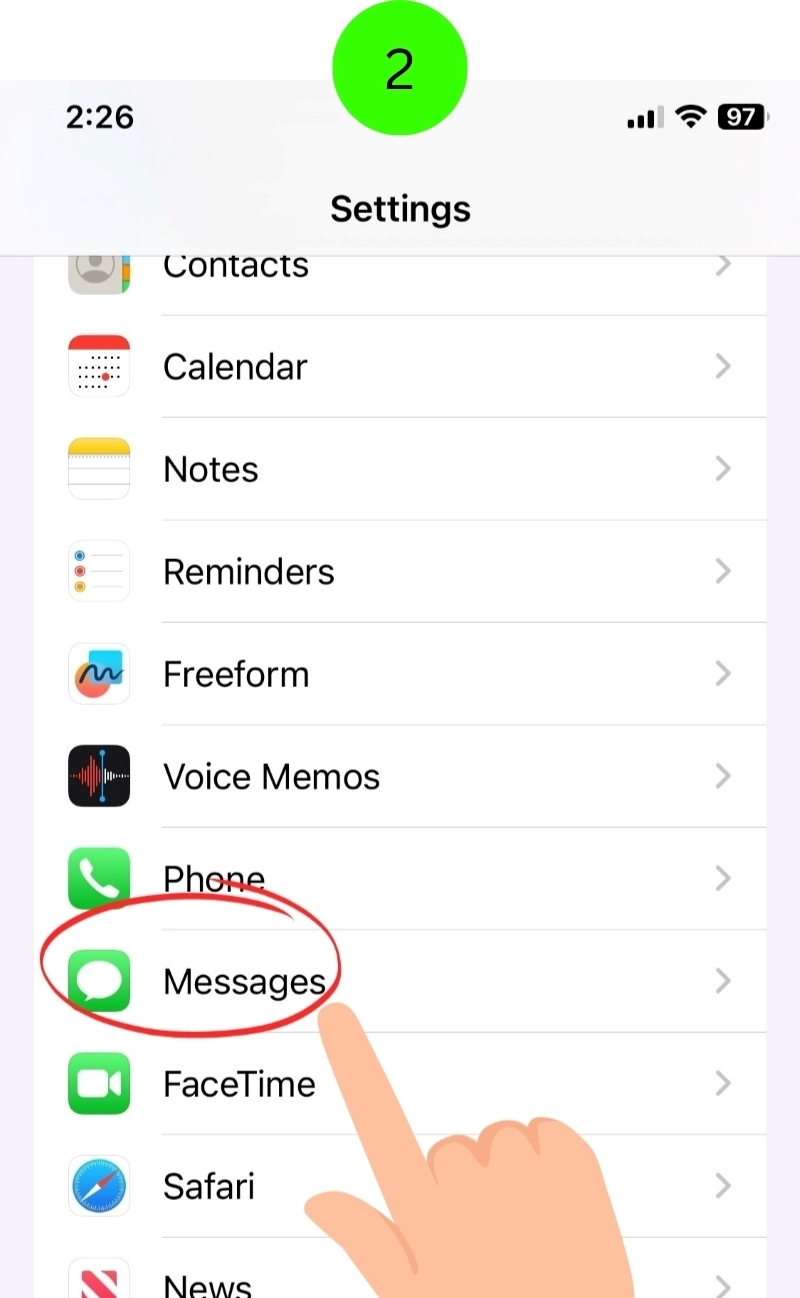
Step 3: In the Messages settings, you will find an option for iMessage – turn this option ON.
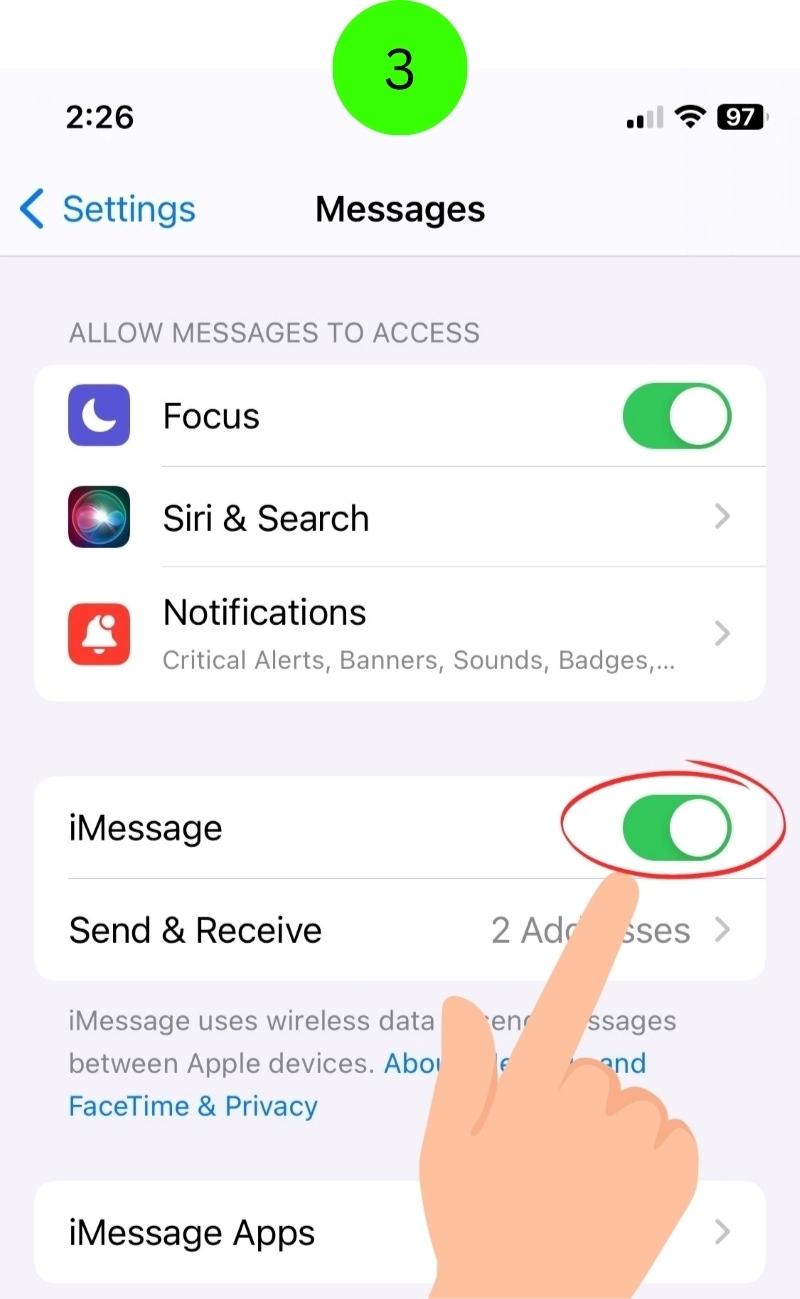
Step 4: The next step is to tap on Send & Receive, where you will choose the phone number or Apple ID you want to use with iMessage.

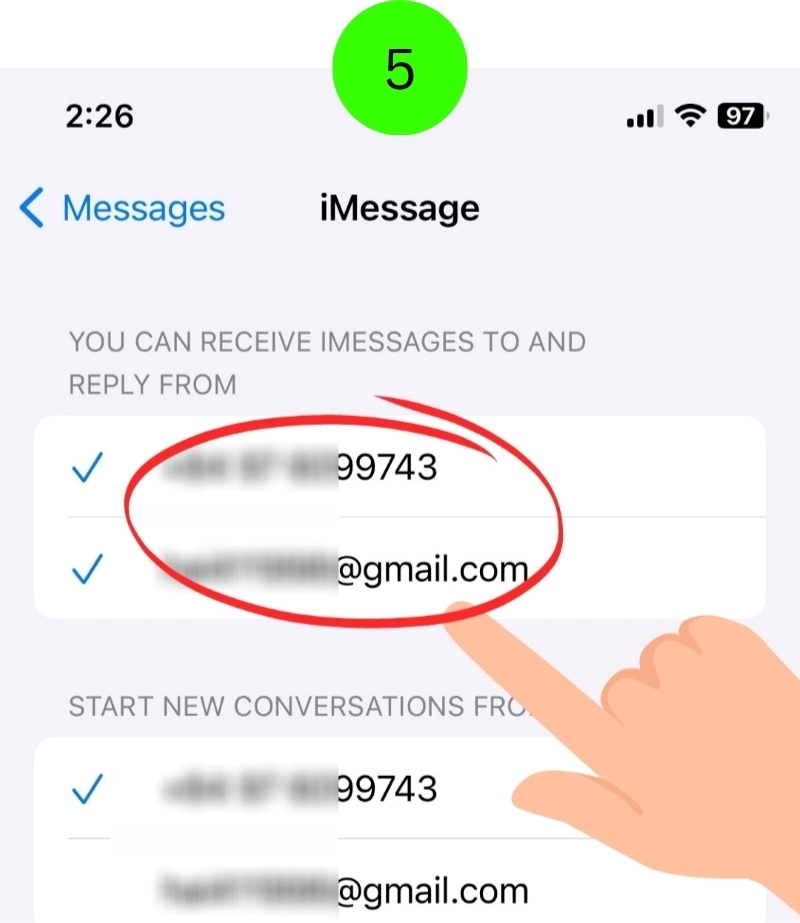
This completes the setup process, and you’re now ready to enjoy messaging with your friends and family through iMessage.
Send an iMessage Using the Messages App
Follow these step-by-step instructions:
Step 1: To send an iMessage using the Messages app on your iPhone, you’ll start by opening the Messages app.
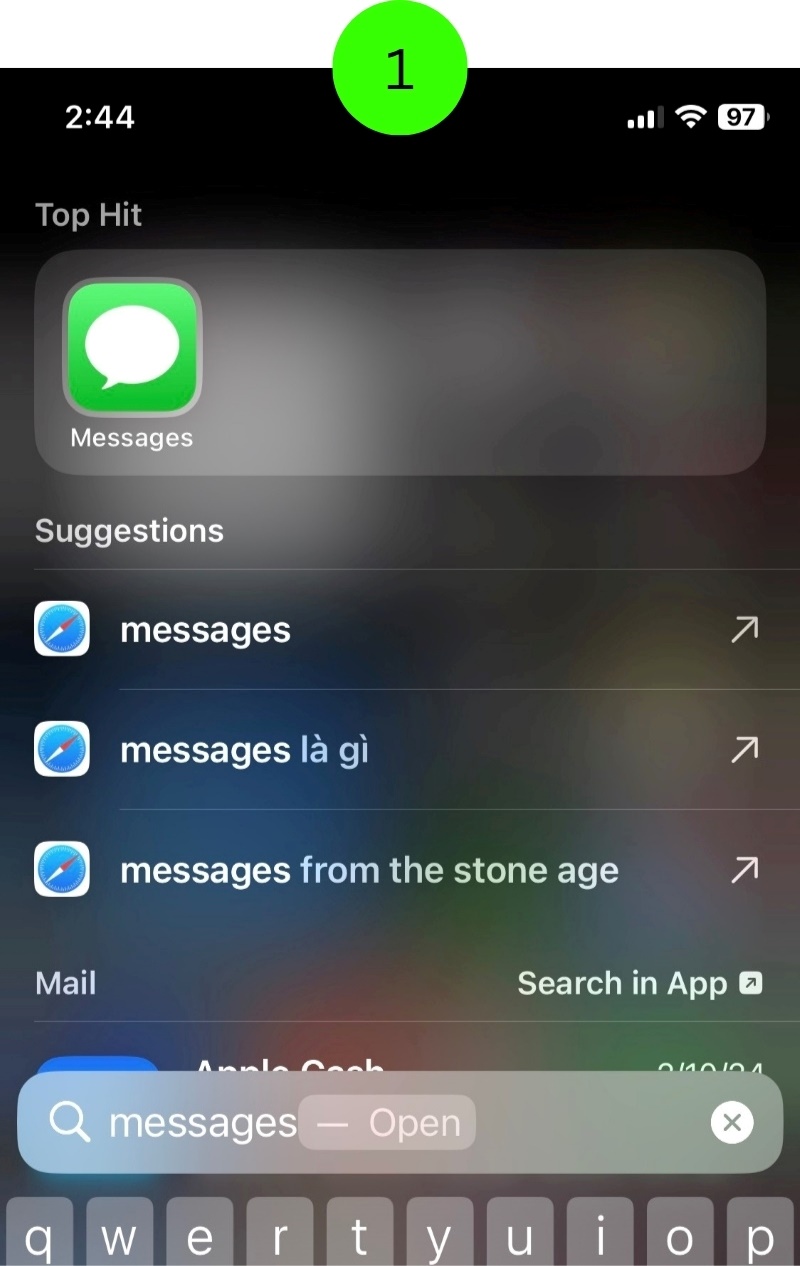
Step 2: Look for the icon that looks like a notepad and pencil in the top-right corner of your screen and tap on it.
![]()
Step 3: This action will take you to a new screen where you can add the person you want to message.
You can type in their name, phone number, or Apple ID email in a section labeled To and then tap the Plus button to add them.
![]()
Step 4: Next, you’ll see a text box where you can type out the message you want to send.
Once your message is ready, just press the Blue arrow button to send your iMessage on its way.
![]()
It’s important to remember that a message with a blue arrow is an iMessage, which is free over Wi-Fi, while a green arrow means it’s a standard text message that might cost you data fees from your phone company.
![]()
Make sure you’re sending the right type of message to avoid any unexpected charges.
How to Fix Common Issues When Using iMessage Internationally
If you’re traveling abroad and find yourself struggling to use iMessage, it can be quite a hassle.
Here’s a detailed guide to troubleshooting and fixing common problems that prevent you from using iMessage abroad.
1. Ensure Your iPhone is Updated
First and foremost, make sure your iPhone’s software is up to date.
Outdated software can sometimes cause iMessage to malfunction.
Step 1: To update your iPhone, start by opening the Settings app.
Step 2: Then tap on the General.
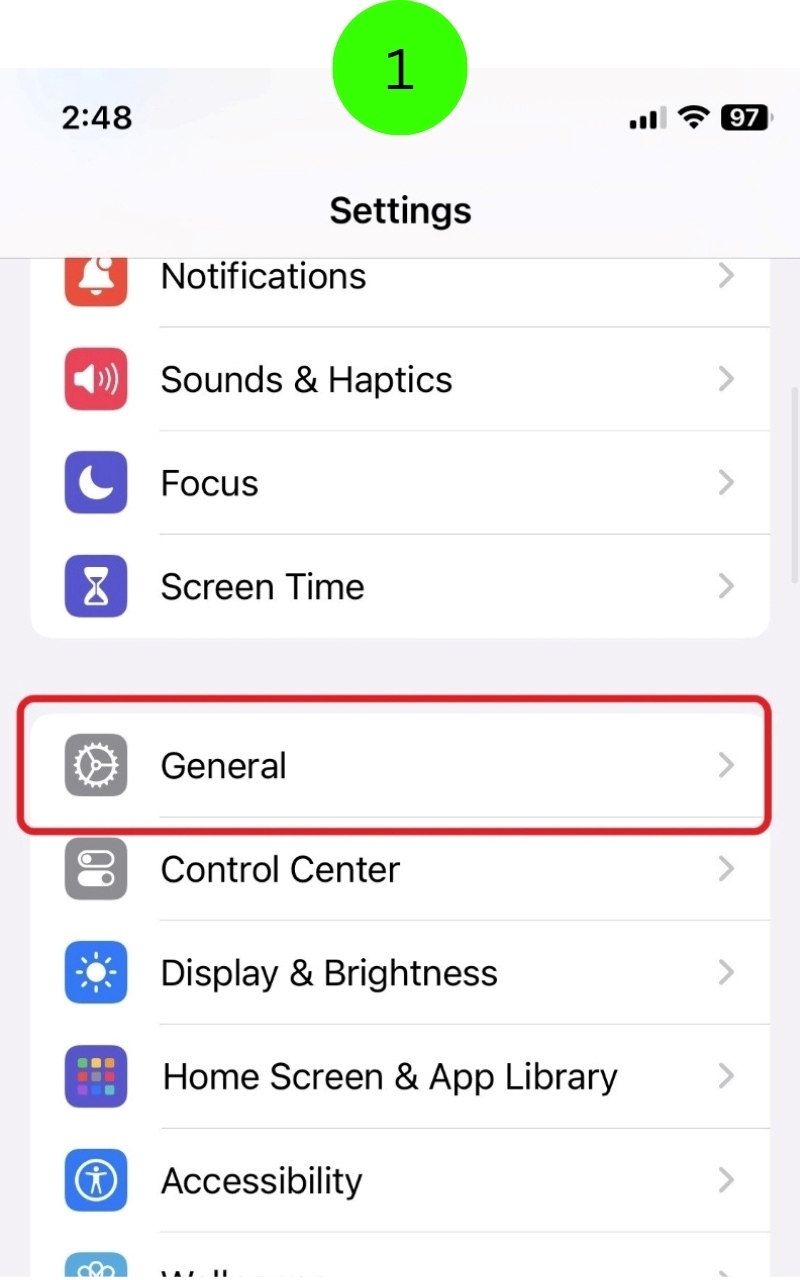
Step 3: Select the Software Update.
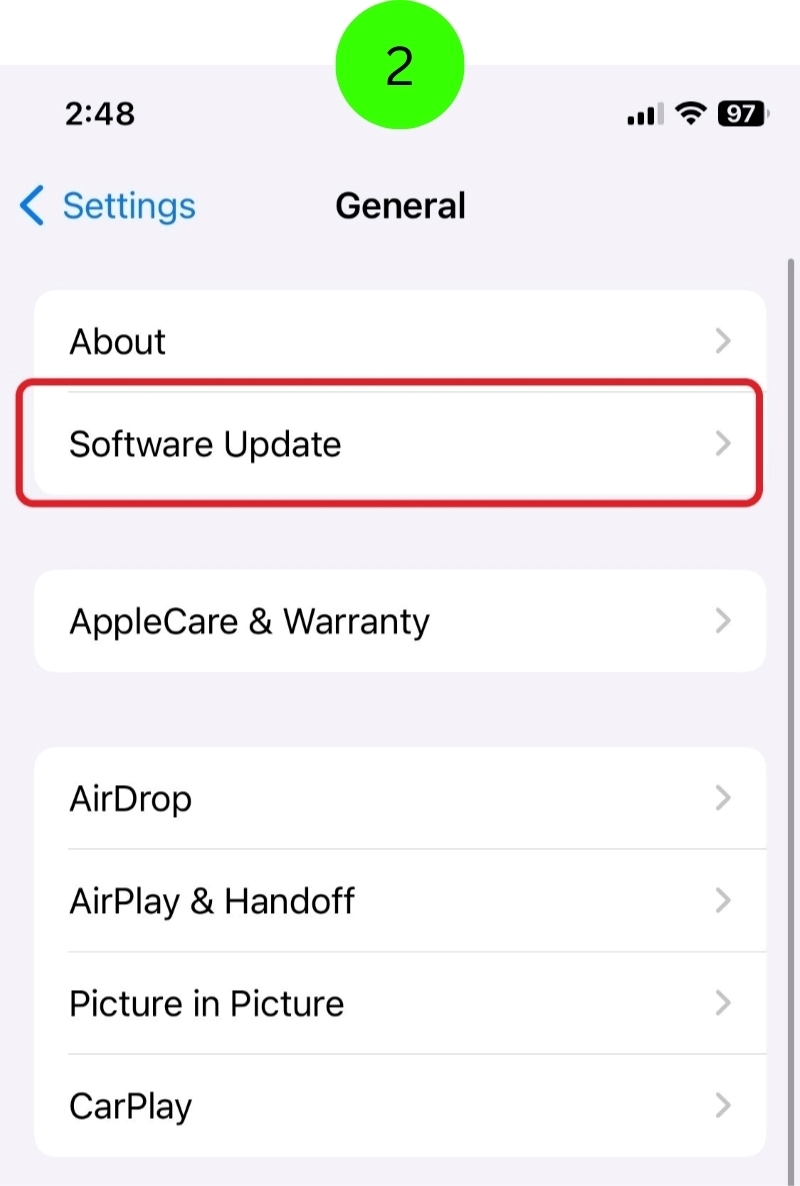
If you see any updates waiting, go ahead and tap Update Now.
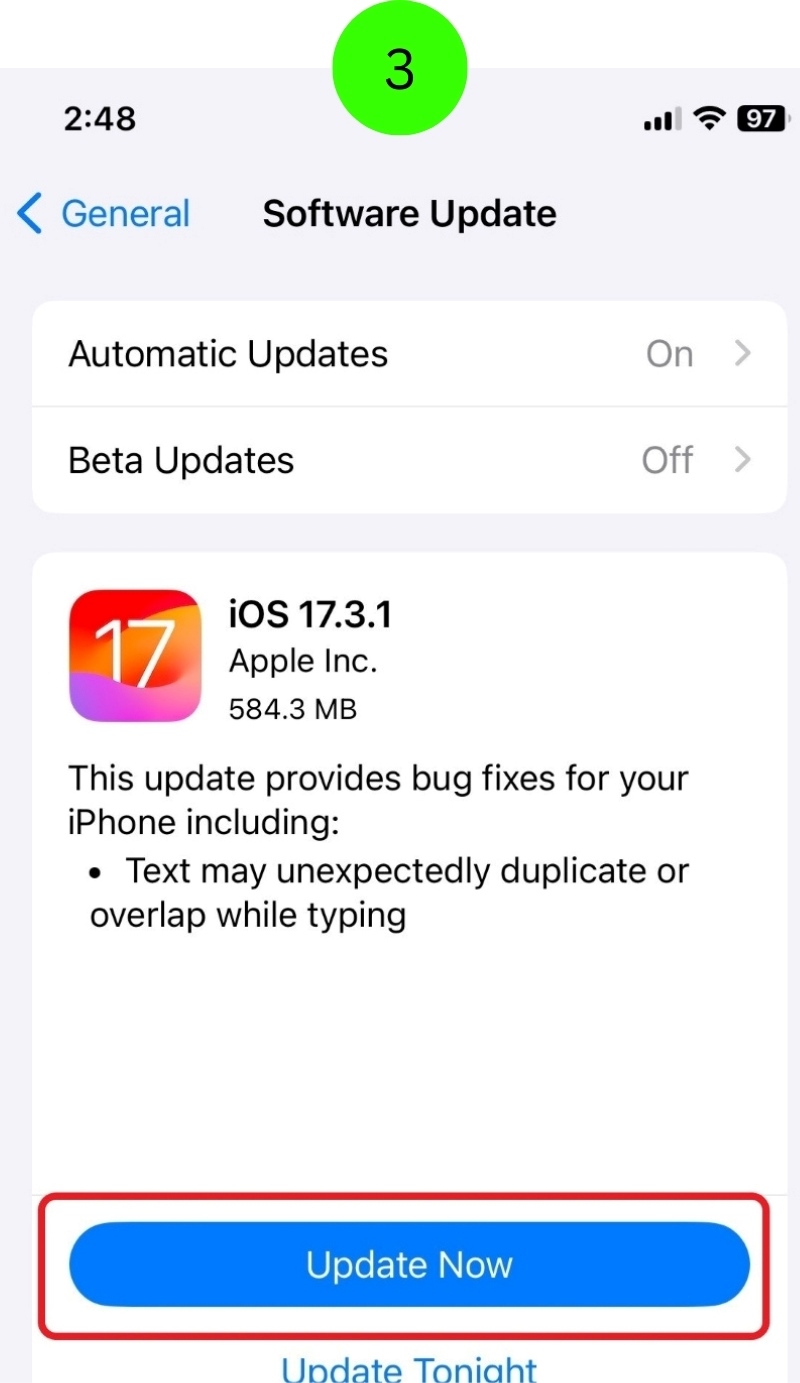
You might need to connect your phone to a charger and enter your passcode to get started on the update.
2. iMessage Needs to Be Set Up
If you’re new to using an iPhone or haven’t set up iMessage before, you’ll need to set it up to start messaging.
This process is straightforward and easy to do; just follow the instructions mentioned earlier to ensure everything is correctly configured.
3. The Recipient Does Not Have iMessage
Remember, iMessage only works when sending messages to other Apple devices that have iMessage activated.
If you try to send a message to someone without iMessage, like Android users, you’ll be charged for SMS or MMS, especially costly when roaming internationally.
So, it’s a good idea to check if the person you’re trying to contact also uses iMessage.
4. Red Exclamation Point
Sometimes, you might see a red exclamation point next to your message, indicating it wasn’t sent.
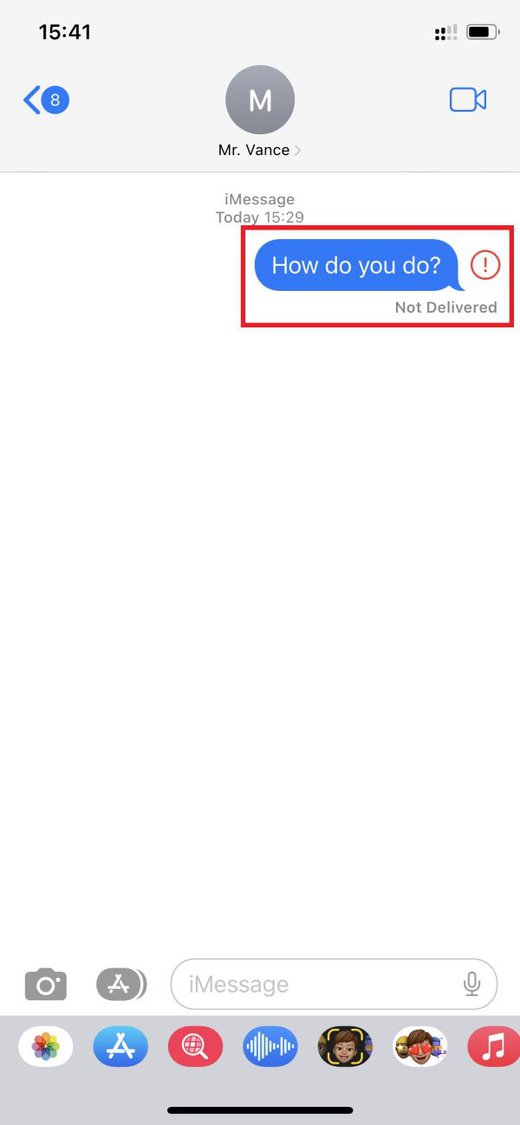
This could be due to your phone not being connected to the internet.
To fix this, check your Wi-Fi connection in the Settings app and make sure you’re connected to a network.
If you still can’t send your message, try tapping the red exclamation point and choosing Try Again.
If that doesn’t work, you have the option to send your message as a text message instead, but keep in mind this could incur roaming charges.
5. Carrier Is Charging You for iMessage
If your iPhone isn’t connected to the internet, or if the recipient doesn’t have iMessage or it’s unavailable, your messages will be sent as regular SMS texts.
This means you will be charged a fee by your carrier.
To avoid unexpected charges, you can disable the Send as SMS option in the Messages settings.
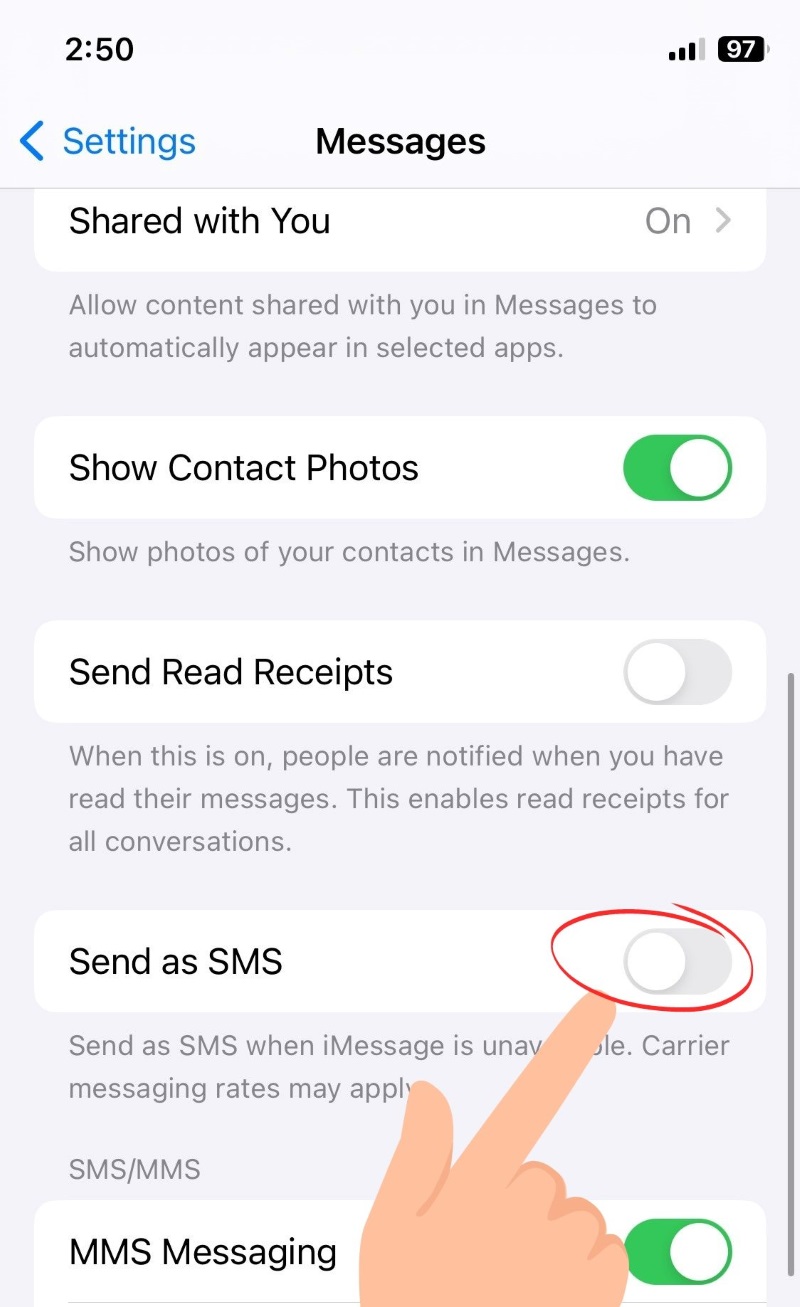
Now, your iMessage won’t automatically be sent as a normal SMS text if the iMessage service isn’t available on both your phone and the recipient’s.
Your iMessage will be held and sent only when iMessage is activated and functioning properly on both your phone and the recipient’s.
6. Check Your iMessage Account
Lastly, if you’re having trouble sending or receiving messages, it could be because your iMessage is linked to the wrong phone number or Apple ID.
This is an easy fix: go to your Settings app, tap on Messages, and then Send & Receive to check or update the phone number or Apple ID associated with iMessage.
Meet Vance. He’s a proud dad, a seasoned Electronics Engineer, and an avid tech lover. His proficiency in electronics and troubleshooting skills were instrumental in crafting Pointer Clicker. Vance is passionate about simplifying tech for those who aren’t well-versed in it.

